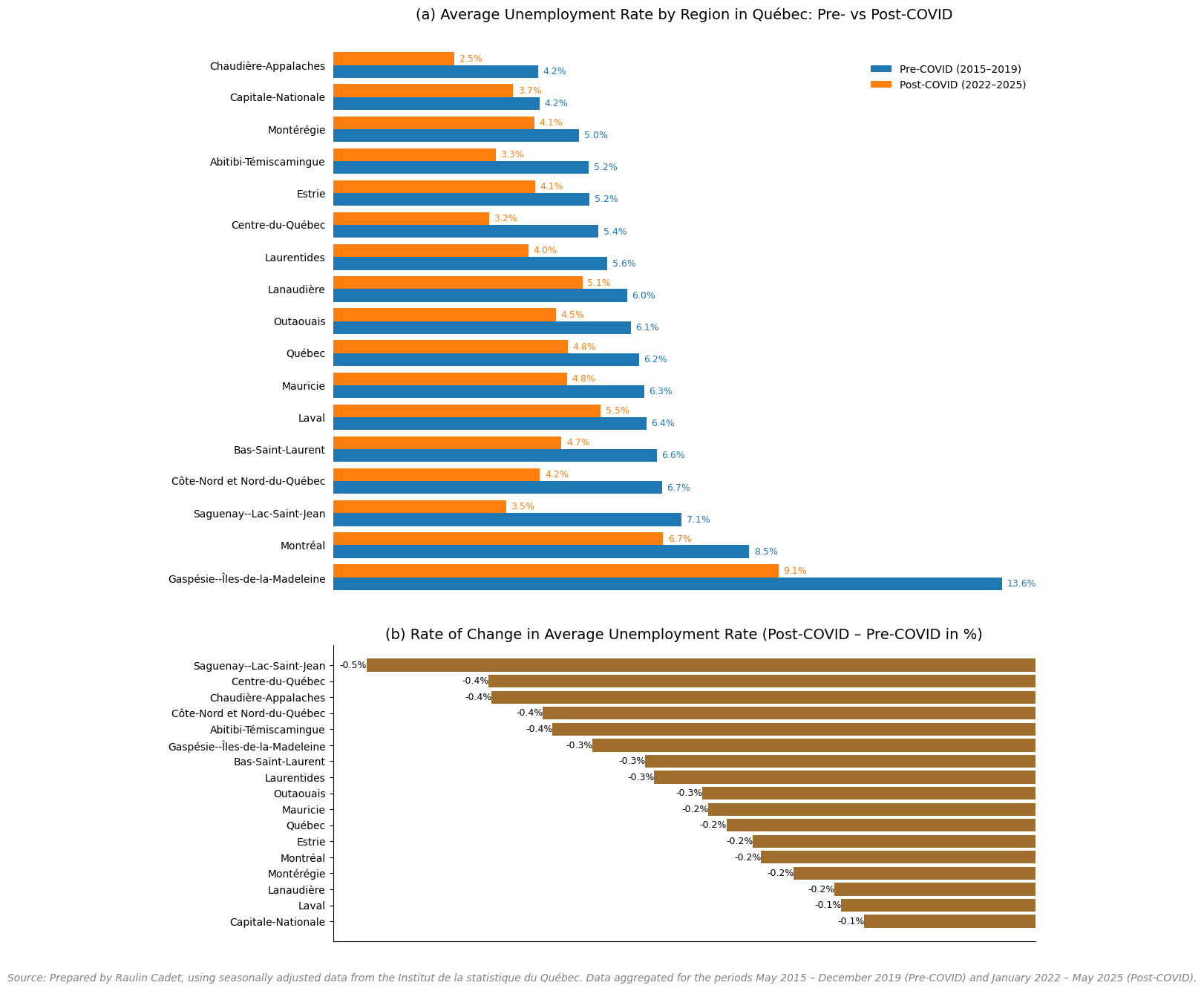Unemployment Shifted: Québec After COVID
By Raulin Cadet | Published July 7, 2025 | Updated July 14, 2025 | Topics: Canada, Unemployment, Employment, Quebec, Job market, Post-COVID

"Be the change that you wish to see in the world."
― Mahatma Gandhi
In a previous article, I showed how Québec, as a whole, transitioned from being a mid-ranking province in unemployment to leading Canada with the lowest average unemployment rate in the post-COVID period (2022–2025). This provincial-level progress raised a natural follow-up question: Which regions within Québec contributed most to this improvement?
I analyzed monthly unemployment data by region from the Institut de la statistique du Québec, comparing two distinct periods: Pre-COVID (May 2015 to December 2019), Post-COVID (January 2022 to May 2025).
Using this data, I calculated the average unemployment rate for each region in both periods and visualized the results to show not only the levels, but also the magnitude of change across Québec.
The graphic (a) in this blog post reveals that every region in Québec experienced a decline in average unemployment, although the size of that decline varied significantly. Gaspésie–Îles-de-la-Madeleine had the highest average unemployment rate in both periods, followed by Montréal. While both regions did see improvements, they are not among those with the largest decreases.
The graphic (b) highlights the regions that experienced the most substantial shifts. Saguenay–Lac-Saint-Jean stands out with the most significant reduction in average unemployment, followed by Centre-du-Québec. These two regions saw greater improvements than any others in the province.
At the other end, Capitale-Nationale and Laval recorded the smallest decreases in average unemployment. It is worth emphasizing that Capitale-Nationale was already among the best-performing regions prior to the pandemic. This limited change suggests a more stable, less dramatic labor market adjustment, rather than a sign of stagnation.
What do you think explains why some regions recovered faster than others?
